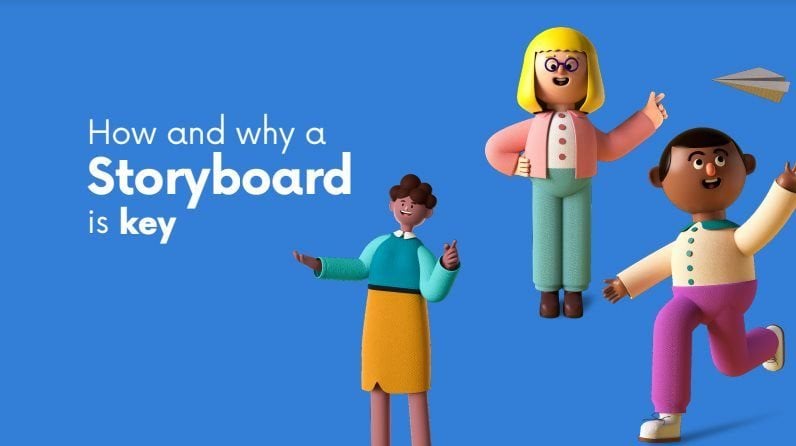
At the final eLearning Indaba for the year, Shulka Karshan-Hudson, head of learning at New Leaf Technologies, took us through a behind-the-scenes look at the development of a learning program and the key role storyboards play in the process.
"[Storyboards are] the framework and backbone of an entire e-learning program," said Karshan-Hudson. "It's a foundation of a really great e-learning experience and that allows us to take the raw content and transform it into this really engaging and exciting final product that our learners see and that we hope they enjoy.
"It's a framework for the content - where we work it into more of an experience rather than just a lecture.
"During this phase, we want to look at all the different aspects of an e-learning course so that we can create something that's really well-rounded."
At the very start of the project, Karshan-Hudson said one of the most important questions to answer is 'what is the best way to present this content?'
"What could be a video, what could be a 360 experience? What kind of imagery do we want to use and help us to portray the message behind all this content?
"I remember an English teacher in high school always told us, when it came to our writing, you want something that's interesting and engaging; you want to show, not tell. You also don't want to have this gaudy Christmas tree at the end of it with all your tinsel and your lights and your baubles. It's just something overwhelming."
Aside from the outcome, she said something to think about is whether the media will enhance your content rating. "We don't want to give our learners any visual fatigue, which I think is something that's really difficult."
Consider the kinds of interactions to include that will keep members engaged and make the content exciting while delivering it in a way that's accessible and encourages people to explore those topics.
"Our target audience is really adults with busy lives... so when we ask [them] to go through a learning course, we need to make it worth their while. We've got to make it something that captures their interest and engages their brain.
"Making learning exciting for an adult is really tough. So we put in a lot of thought to make sure we do strike that balance between engaging and informative while still maintaining the value for our organisations and our learners."
1. Main idea - this information will come directly from clients and will centre around what it is they want, the purpose of the course and what it is they are looking to achieve.
A big factor here, said Karshan-Hudson, is whether the course is compulsory or an opt-in, "because that also really changes how we, as developers and designers, will look at it".
She said she'll read through all the content and envision what she wants it to look like. However, she stressed, instructional designers need to get the structure and the formalities out of the way first, because once they have that down, it gives them a really good framework on which to base the rest of their content and allows them to create something that is well-rounded.
2. The content - read through and familiarise yourself with the content. Map out the client's objectives and outcomes.
Following this, Karshan-Hudson said the next thing to consider is assessments - whether these will be formative or summative, as well as where and how they will be administered (at the end of each module or at the end of the course).
"Depending on what you want to achieve at the end will also help determine how you're going to conduct this assessment and where you're going to put it. Then after that, you want to work out your structure of the course and how you're breaking it down.
"It's really important to make sure that you group your content into little bite-sized chunks so that your learner can plan out their learning timetable."
3. Design cues - this is where all the ideas, considerations and elements finally start coming together.
"You can really think about the design, and you can start to communicate that vision in your head," she enthused. "You give some direction on the media and all those other experiences and interactions that's going to make it really exciting and really valuable."
Now is also the time to consider what kind of activities to include in the program - whether you'll use flash-card activities or gamification, which can be exciting for the design team.
If ever you become stuck during the process, Karshan-Hudson suggested using one of the following design principles to help develop your storyboard:
"Once you put all these steps together, you've got a really good framework and foundation for a successful and valuable learning program. You can now hand over to your development team and this is where you know the real magic is going to come into play.”